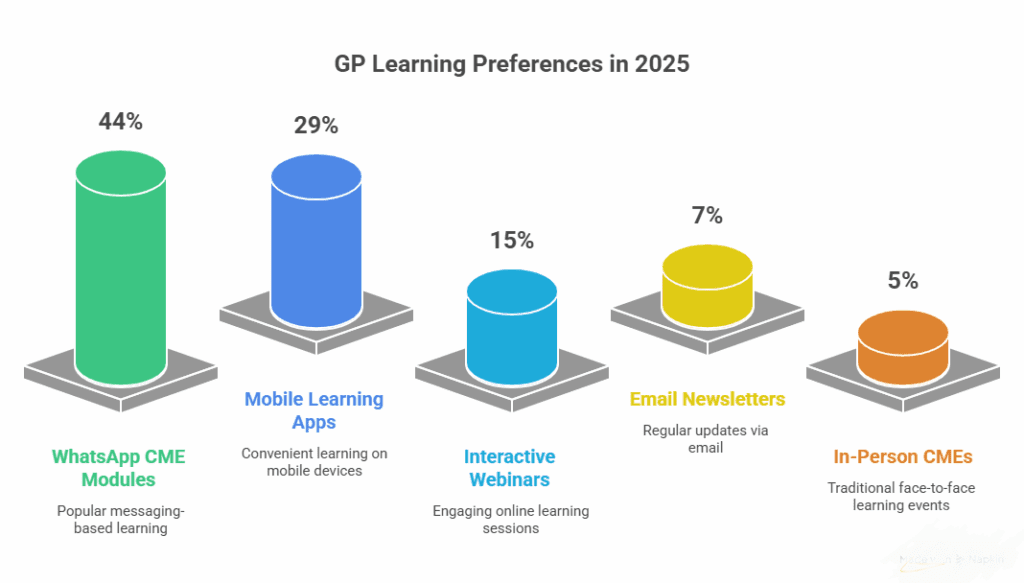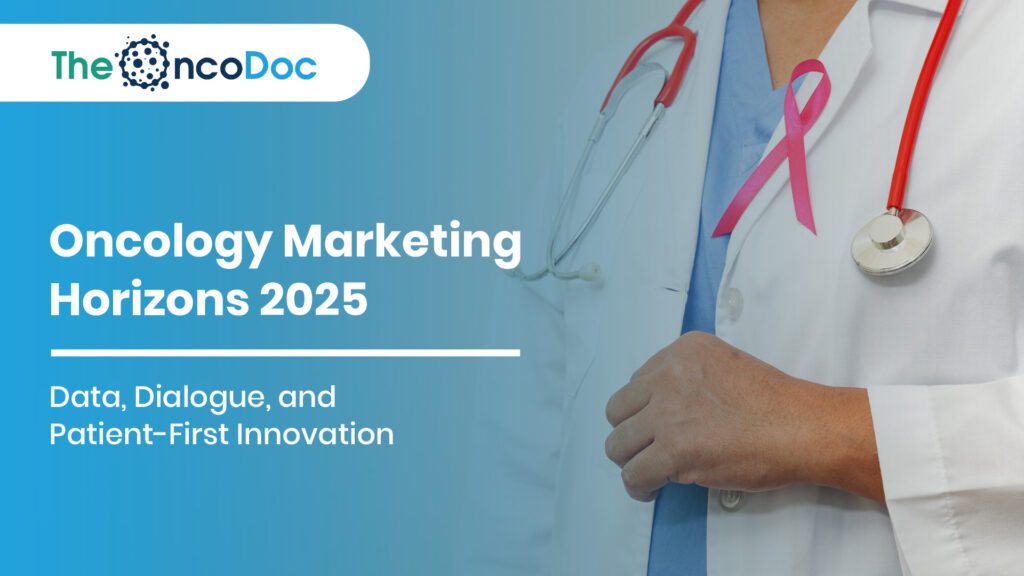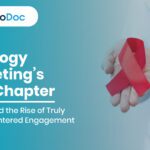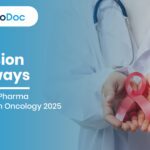Introduction: The Evolving Landscape of Oncology Marketing
Oncology marketing in 2025 is no longer just about delivering drug information-it’s about fostering conversations, building trust, and enabling precision health decisions. The oncology ecosystem has grown more complex, with patients, caregivers, oncologists, and general practitioners all playing vital roles.
Pharma marketers must navigate this ecosystem with strategies that balance clinical credibility with human empathy. Success depends on offering real value-educational tools, early detection awareness, and support systems-while aligning with cutting-edge digital health technologies.
This evolution shows that oncology marketing is no longer about transactions but relationships. Every message carries the potential to change behavior, improve outcomes, and save lives. By blending technology and compassion, pharma marketers can create a lasting impact in oncology care.
1. Patient-Centric Campaign Foundations
Today’s oncology campaigns begin not with the product but with the patient story. By addressing fears, providing resources, and using survivor voices, pharma companies establish campaigns rooted in empathy. This approach increases receptivity and creates a platform for deeper engagement.
Patient-first campaigns create stronger emotional bonds between pharma brands and their audiences. They transform messaging from clinical instruction into supportive guidance, ensuring patients feel understood and valued.
2. Precision Data Segmentation
Different cancers dominate in different geographies. AI-driven segmentation allows pharma marketers to deliver custom campaigns based on age, risk, region, and cultural context. Data ensures every patient-facing message is both relevant and actionable.
This level of targeting helps reduce wasted effort and builds campaigns that resonate authentically. By turning data into insight, marketers craft messages that feel personalized rather than generalized.
3. Empowering General Practitioners
GPs remain the first clinical gateway for suspected cancer cases. Pharma companies now equip them with quick diagnostic checklists, referral guides, and digital CME modules, ensuring timely cancer referrals.

Equipping GPs ensures that cancer isn’t missed at the earliest stage. By giving them fast, accessible knowledge, pharma plays a direct role in bridging the gap between symptoms and oncology care.
4. Omnichannel Marketing Pathways
Modern oncologists consume content across channels-apps, webinars, social media, and email. Pharma marketers create integrated journeys where the same message flows consistently across every medium, reinforcing trust.
Omnichannel strategies allow for personalization without fragmentation. This makes each interaction meaningful and ensures doctors receive reliable, coordinated information wherever they are.
5. Behavioral Science Integration
Using nudges, reminders, and gamification, campaigns guide patients toward screenings and follow-ups. For example, reminders during Breast Cancer Awareness Month or gamified self-check quizzes increase participation significantly.
Behavioral insights make preventive care feel natural rather than forced. They subtly encourage patients to act, making screenings part of routine behavior instead of a one-time decision.
6. The Power of Survivor Advocacy
Campaigns that feature survivor testimonials achieve higher engagement and inspire action. Survivor-led videos, podcasts, and local advocacy sessions reduce stigma and encourage early consultations.
Survivor stories show that early detection saves lives, reinforcing campaign messages with proof. Their authenticity resonates with communities, turning personal experience into a public health tool.
7. AI Personalization in Awareness Campaigns
AI tools tailor messages based on individual behaviors. Example: A patient searching for “chronic cough” may receive targeted lung cancer content, while a young woman browsing “breast lump symptoms” sees personalized resources.

AI ensures patients receive relevant information at the right time. This personalization builds trust and prevents campaigns from feeling generic or disconnected.
8. Vernacular and Localized Campaigns
Localized languages and cultural channels matter. Folk art, community radio, and regional TV ads outperform generic campaigns by building trust and comprehension within target communities.
Localization acknowledges cultural diversity and reduces barriers to understanding. Campaigns designed in native languages also spark community conversations, amplifying awareness organically.
9. Oncologist-Focused Digital Ecosystems
Pharma is investing in platforms that provide oncologists with AI-curated research summaries, interactive dashboards, and case-discussion forums, making pharma a knowledge partner instead of just a supplier.
These ecosystems reduce information overload by curating the most relevant updates. By saving oncologists’ time, pharma builds goodwill and strengthens long-term professional relationships.
10. Redefining Marketing KPIs
Success metrics now extend beyond digital impressions to outcomes such as referrals generated, screenings scheduled, and patients engaged.

Outcome-driven KPIs bring pharma marketing closer to healthcare objectives. They ensure campaigns are judged not by volume, but by the quality of impact on patient lives.
11. Collaborating with Micro-Influencers
Community oncologists, regional NGOs, and survivor leaders carry stronger grassroots credibility than national figures. Partnering with them amplifies the reach of campaigns at the local level.
These voices often resonate more deeply within specific cultural contexts. By empowering local advocates, pharma companies can cultivate genuine trust that corporate messaging alone cannot achieve.
12. Predictive AI for Early Intervention
AI-driven analytics predict areas where cancer awareness is most urgently needed. This enables pharma marketers to deploy resources proactively, ensuring high-impact interventions.
Such precision ensures that communities receive the right campaigns at the right time. Over time, predictive targeting evolves into a public health tool that enhances cancer detection rates.
13. Gamified Patient Engagement Tools
Pharma-backed mobile apps now use gamification to keep patients motivated-through quizzes, risk scores, and reward-based screening drives. This lightens the psychological burden of cancer prevention.
The interactive nature of gamification also sparks conversations within families and communities. By reframing screenings as “challenges” rather than chores, engagement rises steadily.
14. Wearables as Engagement Platforms
Smartwatches and trackers integrated with pharma apps can monitor vitals and encourage checkups when anomalies are detected, helping align preventive care with brand messaging.
These tools bridge lifestyle and medicine, making cancer awareness a daily practice. As wearables grow more affordable, pharma has an opportunity to integrate outreach with everyday health behavior.
15. Strengthening Public-Private Partnerships
By co-sponsoring national cancer awareness programs with NGOs and health ministries, pharma firms add legitimacy and scale to their campaigns, creating sustainable public health impact.
Partnerships also allow access to government infrastructure and grassroots networks. This synergy maximizes campaign efficiency while reducing operational costs for pharma.
16. Building Digital Communities of Survivors
Online groups supported by pharma act as peer-support spaces where patients share stories, doctors provide Q&A sessions, and caregivers find resources. These communities foster brand trust.
They also serve as feedback hubs, revealing real patient concerns and unmet needs. This dual role makes survivor communities both a support system and an intelligence resource for pharma.
17. Voice and IVR Campaigns for Rural Outreach
Interactive voice response systems and AI-powered voice bots deliver health messages in regional languages, helping overcome literacy barriers in rural and semi-urban areas.
This approach democratizes access to oncology information, reaching even those without internet. Voice-tech becomes a low-cost yet powerful channel to extend campaigns into remote corners.
18. Sentiment Analytics in Campaigns
By analyzing audience sentiment on social platforms, pharma marketers can fine-tune campaigns-shifting from fear-based communication to hope-driven messaging when needed.
This real-time monitoring allows campaigns to stay aligned with public mood. The ability to adapt tone instantly ensures better engagement and prevents misinterpretation.
19. Survivor-Led Grassroots Movements
Survivor clubs host local workshops, screening drives, and awareness camps, delivering a message that blends credibility, empathy, and urgency.
These movements thrive on peer-to-peer influence, which is more persuasive than statistics alone. Survivor-led outreach embodies authenticity and fosters trust at scale.
20. AR/VR as Learning Tools for Oncologists
AR and VR simulations supported by pharma firms provide oncologists with immersive tumor biology lessons and surgical training modules, accelerating medical learning.
Such immersive tools reduce dependency on physical training opportunities. They also give oncologists a safe, repeatable environment to sharpen complex clinical skills.
21. Chatbots for Patient Guidance
Pharma-backed oncology chatbots offer 24/7 triage, appointment scheduling, and treatment guidance, ensuring patients remain engaged and supported throughout their journey.
Their accessibility makes them indispensable in bridging healthcare gaps. Chatbots also serve as data-gathering tools, highlighting frequently asked questions for refining campaigns.
22. Social Listening Against Myths
AI-powered monitoring detects misinformation like “home remedies for cancer.” Pharma responds with fact-checked posts, videos, and doctor-led explanations to protect public health.
This vigilance prevents harmful myths from gaining traction. By countering misinformation promptly, pharma safeguards patient choices and strengthens credibility.
23. Post-Treatment Patient Engagement
Beyond treatment, pharma now focuses on survivorship care-nutrition plans, rehab apps, and stress management webinars-building long-term loyalty.
This ongoing engagement reassures survivors that pharma’s role extends beyond drugs. It positions brands as holistic partners in the lifelong journey of cancer recovery.
24. Future Outlook: Oncology Marketing Redefined
The future lies in predictive, personalized, and human-centered marketing. Brands that blend AI foresight with emotional intelligence will shape not just perceptions, but outcomes.
As oncology evolves, the winners will be those who embed empathy into every digital innovation. This balance ensures lasting relevance and impact in cancer care.
Conclusion: Oncology marketing in 2025 is shifting from promotion to partnership. By prioritizing patients, empowering oncologists, and building community trust, pharma brands create a sustainable impact on cancer outcomes.
The essence of tomorrow’s campaigns lies in saving lives, not just selling solutions. In this way, marketing becomes a mission-driven pillar of modern oncology.
As the industry embraces precision, empathy, and digital intelligence, campaigns will evolve into catalysts for societal change. The future of oncology marketing will be measured not by reach, but by hope restored and lives extended.
The Oncodoc team is a group of passionate healthcare and marketing professionals dedicated to delivering accurate, engaging, and impactful content. With expertise across medical research, digital strategy, and clinical communication, the team focuses on empowering healthcare professionals and patients alike. Through evidence-based insights and innovative storytelling, Hidoc aims to bridge the gap between medicine and digital engagement, promoting wellness and informed decision-making.



